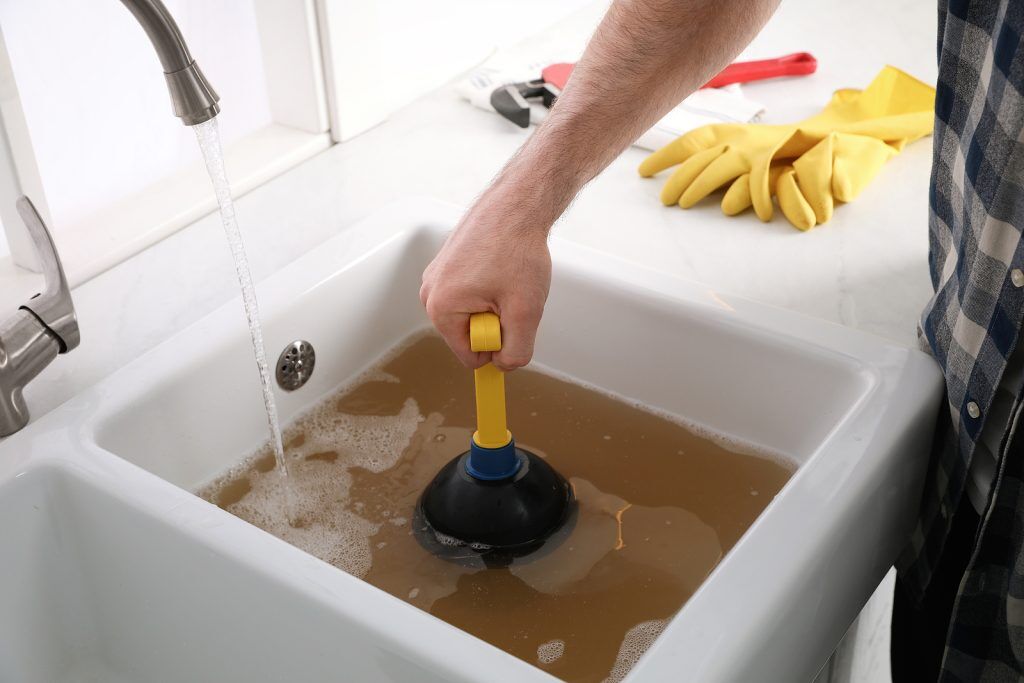How to Apply Plunger and Drain Cleaners Successfully: Professional Guidance
How to Apply Plunger and Drain Cleaners Successfully: Professional Guidance
Blog Article
This article in the next paragraphs pertaining to A Guide to Plungers (and How to Use Them) is exceptionally fascinating. Have a go and draw your own personal findings.

Introduction
Correct maintenance of family drains pipes is vital for preventing blockages and making certain smooth water flow. One of the secret devices in every homeowner's toolkit is the plunger, together with numerous drainpipe cleansers designed to tackle stubborn blockages successfully. This write-up discovers just how to make use of bettors and drainpipe cleansers properly to maintain your drains pipes flowing easily.
Area 1: Comprehending Bettors
Types of Plungers
There are numerous types of bettors readily available, each designed for different types of drains and blocks. One of the most common types include cup plungers, flange bettors, and accordion plungers.
How Plungers Work
Plungers service the concept of creating pressure and suction to remove blockages. When effectively used over a drainpipe, they create a vacuum that can take out particles or break up obstructions.
Picking the Right Bettor
Picking the ideal plunger depends upon the kind of drainpipe and the nature of the blockage. Mug plungers are optimal for sinks and tubs, while flange bettors are better matched for bathrooms as a result of their style.
Usual Errors with Plungers
Preventing these mistakes guarantees effective plunging: improper seal around the drain, not enough force, and not clearing bordering debris.
Section 2: Making Use Of Plungers Successfully
Preparation
Before diving, make certain the bettor covers the drainpipe totally and creates a tight seal. Clear any noticeable particles around the drain opening.
Strategy
Start with mild diving motions to build suction. Boost stress gradually, utilizing a constant rhythm. Repeat as needed until the drain removes.
Repairing Tips
If diving doesn't work, try changing the seal, applying petroleum jelly for a far better seal, or making use of a various type of plunger.
Area 3: Understanding Drain Cleansers
Kinds Of Drain Cleaners
Drain cleansers can be chemical or enzymatic. Chemical cleansers utilize strong chemicals to liquify blockages, while chemical cleaners utilize all-natural enzymes to break down organic matter.
Exactly How Drain Cleaners Work
Chemical cleaners respond with obstructions to dissolve them, while enzymatic cleaners break down organic products like hair and oil without harming pipes.
Safety and security Considerations
Constantly use gloves and eye protection when making use of chemical drain cleansers. Make sure sufficient ventilation and comply with producer guidelines very carefully.
Eco-Friendly Alternatives
Think about making use of vinegar and baking soft drink or enzyme-based cleaners for green choices that are more secure for pipes and the atmosphere.
Area 4: Utilizing Drainpipe Cleaners Efficiently
Application Strategies
Pour chemical cleaners directly right into the drainpipe opening. Allow them to help the advised time prior to flushing with hot water. Enzymatic cleaners must rest over night.
Precautions
Avoid mixing different kinds of cleansers, as this can create poisonous fumes. Never ever make use of chemical cleansers in conjunction with a plunger, as splashing can occur.
Managing Stubborn Blockages
For consistent obstructions, consider making use of a pipes snake or calling a specialist plumbing professional to prevent damage to pipelines.
Final thought
To conclude, recognizing just how to use plungers and drain cleansers properly is crucial for keeping healthy pipes systems. By selecting the right tools and strategies, house owners can tackle small clogs and protect against major pipes problems down the line.
How To Properly Use A Plumbing Snake To Clear Drains
When any drain clogs in our home arise, we tend to gravitate toward the plunger and little else. In cases where the plunger and its vacuum-created pressure are not able to clear clogs, many immediately move to harmful chemicals or simply call their plumber to fix the issue.
we’re happy to help with all drain cleaning needs and concerns. This includes informing you on a few other home remedies you may have at your disposal for minor to moderate clogs, one of which is the use of a plumbing snake. Many people have never used one of these before – let’s go over the steps to take when your drain clogs and you have a plumbing snake available.
Attempt Plunger Use
The first step here, as we noted above, should indeed be to grab your plunger when you notice a drain clog and attempt to resolve it this way. If you’re unsure how to use a particular type of plunger, our plumbers can answer any questions you have. If this doesn’t do the trick, however, you move on to the snake.
Locate And Prepare Snake
A plumbing snake is a metal or plastic device that’s generally about a quarter of an inch thick. It’s design with significant extensions, meant to reach down into your clogged drain and push the clog out. Snakes also contain drain augers that will latch onto and push stubborn blockages.
If your plunger doesn’t clear a clog, locate your snake and bring it to the drain in question. We also recommend keeping a bucket nearby to collect the clog once you pull it out, plus we’d advise wearing goggles and possibly protective gloves.
Feed Snake
Once you’re ready to go, feed the snake slowly down the drain, using the crank device it comes with to keep it moving until it finds the clog. Once this happens, much of the clog will be latched onto the coil so you can pull it out, while the rest will simply break up and flow downward.
Detach Debris
Remove the snake slowly from the drain, and once you’ve done so, pick off any debris that’s stuck to the coil. This is another area where wearing gloves is a must.
Flush Drain
Finally, take a few minutes to ensure the snake has done its job correctly. If you’ve been using it on a toilet, flush the toilet a couple times and make sure everything flows well. If you’ve used it on a different drain, flush it with some room temperature water.
https://www.mybuddytheplumber.com/blog/how-to-properly-use-a-plumbing-snake-to-clear-drains/

Application Strategies
Pour chemical cleaners directly right into the drainpipe opening. Allow them to help the advised time prior to flushing with hot water. Enzymatic cleaners must rest over night.
Precautions
Avoid mixing different kinds of cleansers, as this can create poisonous fumes. Never ever make use of chemical cleansers in conjunction with a plunger, as splashing can occur.
Managing Stubborn Blockages
For consistent obstructions, consider making use of a pipes snake or calling a specialist plumbing professional to prevent damage to pipelines.
Final thought
To conclude, recognizing just how to use plungers and drain cleansers properly is crucial for keeping healthy pipes systems. By selecting the right tools and strategies, house owners can tackle small clogs and protect against major pipes problems down the line.
How To Properly Use A Plumbing Snake To Clear Drains
When any drain clogs in our home arise, we tend to gravitate toward the plunger and little else. In cases where the plunger and its vacuum-created pressure are not able to clear clogs, many immediately move to harmful chemicals or simply call their plumber to fix the issue.
we’re happy to help with all drain cleaning needs and concerns. This includes informing you on a few other home remedies you may have at your disposal for minor to moderate clogs, one of which is the use of a plumbing snake. Many people have never used one of these before – let’s go over the steps to take when your drain clogs and you have a plumbing snake available.
Attempt Plunger Use
The first step here, as we noted above, should indeed be to grab your plunger when you notice a drain clog and attempt to resolve it this way. If you’re unsure how to use a particular type of plunger, our plumbers can answer any questions you have. If this doesn’t do the trick, however, you move on to the snake.
Locate And Prepare Snake
A plumbing snake is a metal or plastic device that’s generally about a quarter of an inch thick. It’s design with significant extensions, meant to reach down into your clogged drain and push the clog out. Snakes also contain drain augers that will latch onto and push stubborn blockages.
If your plunger doesn’t clear a clog, locate your snake and bring it to the drain in question. We also recommend keeping a bucket nearby to collect the clog once you pull it out, plus we’d advise wearing goggles and possibly protective gloves.
Feed Snake
Once you’re ready to go, feed the snake slowly down the drain, using the crank device it comes with to keep it moving until it finds the clog. Once this happens, much of the clog will be latched onto the coil so you can pull it out, while the rest will simply break up and flow downward.
Detach Debris
Remove the snake slowly from the drain, and once you’ve done so, pick off any debris that’s stuck to the coil. This is another area where wearing gloves is a must.
Flush Drain
Finally, take a few minutes to ensure the snake has done its job correctly. If you’ve been using it on a toilet, flush the toilet a couple times and make sure everything flows well. If you’ve used it on a different drain, flush it with some room temperature water.
https://www.mybuddytheplumber.com/blog/how-to-properly-use-a-plumbing-snake-to-clear-drains/

As an avid person who reads about Tips on How to Effectively Use a Plunger, I assumed sharing that excerpt was valuable. Those who appreciated our article if you please don't forget to pass it around. I recognize the value of your readership.
Call Today Report this page